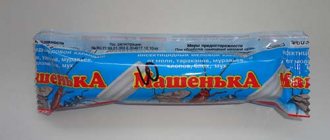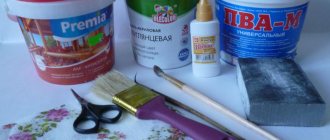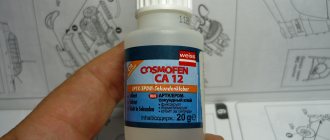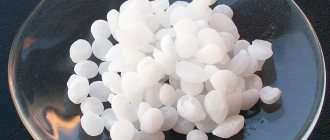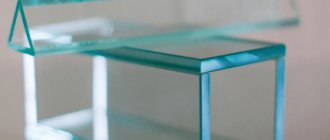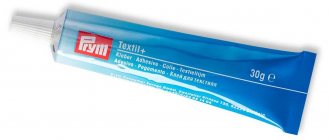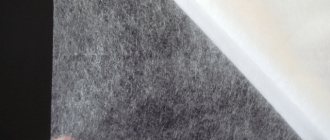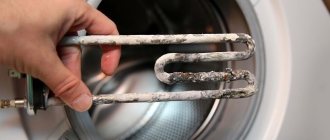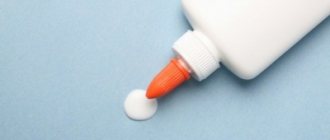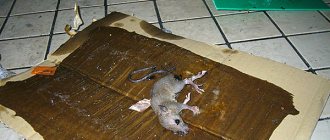Stationery silicate glue is a viscous compound that is intended for use in production and at home. It is used for joining paper and cardboard; the composition is included in construction mixtures and lubricants to significantly increase their stability and protection from external influences.
Compound
Liquid glass glue is an introductory alkaline solution of silicas. For the first time, liquid glass was extracted by a chemist from Germany, Ya.N. von Fuchs at the beginning of the 19th century. Then he was able to discover the stickiness of this substance.
The modern composition of office glue may vary depending on the components used. Usually the formula contains sodium or potassium silicates, sometimes lithium silicate, which make the mixture surprisingly sticky. Depending on the main silicate included in the composition, the areas of use of this glue will differ.
Silicate glue types and brands
The domestic industry produces various types and brands of office glue designed to perform certain specific tasks, as well as universal compositions.
Depending on the purpose of use, the following brands are distinguished:
- for gluing paper;
- glass connectors;
- waterproofing;
- fireproof;
- for carrying out various installation works.
Russian manufacturers make fairly high-quality products in large volumes, and therefore expensive foreign analogues appear on the market infrequently.
For the most part, the following brands are present in the retail chain:
- "Oxium". Sodium-based liquid glass. It has a wide range of applications, from construction to design.
- "Kubanzheldormash" The material is sold in large containers and is in demand for interior and exterior finishing work, in plumbing and metallurgical activities.
- "Silicate". The solution is poured into small containers. Well suited for offices, small household activities related to repairs and cladding.
- "Glass product" The product is characterized by high strength and reliability of the seam. Due to these characteristics, it has found its use in various sectors of heavy and light industry.
Issues such as the density of the solution, operating temperature, as well as how much silicate glue, can be clarified from the instructions that are applied to the product packaging.
Silicate glue packaging, packaging forms
Silicate-based compounds are sold in almost all hardware stores and shopping centers that have an office supply department.
The following forms of packaging are available to the consumer:
- Household. They are small containers with a dispenser, and sometimes with a brush. Capacity varies between 50-1000 ml.
- Industrial. The liquid is poured into cans, buckets and barrels with a volume of 5-50 liters.
As for the release form of the product itself, it comes in liquid (ready-to-use), concentrated form, in powder form for dilution in water, and also in solid form in rotating tubes (pencils).
Peculiarities
Silicate liquid glass glue usually has a transparent, dense consistency, sometimes with a yellowish or greenish tint. The sodium composition of the glue ensures good adhesion of the substance to any materials. It is used when working with foundations, glass, porcelain, and is used in fireproof processing of building materials.
Potassium glue is resistant to aggressive environmental factors and is used for the production of protective paints and varnishes. It lies on the surface in the form of a matte layer without glare.
Silicate glue is produced in accordance with GOST 13078-81, so to avoid purchasing counterfeits, you can ask the seller for a quality certificate. In its pure form, liquid glass can harden in 10 minutes. If it acts as an ingredient for another building mixture, then the curing time will vary.
If you mix sodium silicate adhesive with cement-sand compositions, the hardening speed will be increased. Therefore, such combinations are often used when working with foundations and to create waterproofing coatings. Stationery glue has a special composition that allows it to quickly penetrate the structure of solid materials, releasing moisture and increasing viscosity and density.
DIY cooking: instructions
Even despite the budget cost, some housewives prefer to prepare the glue themselves. However, to do this, you must have certain components on hand. It is better to cook it in large quantities at once. To create, you will need potassium silicate, sodium silicate and silicic acid. Step-by-step instruction:
- Connect two silicates together. They must be taken in equal proportions.
- Add 10% acid solution. You can also dilute the substance to a certain strength manually.
- Add acid to form liquid on the surface of the mass.
- Put the mixture on fire. Set the heat to low and cook for 10 minutes. Stir constantly.
- Cool the mixture and pour into containers that are sealed tightly.
Specifications
Silicate glue has gained immense popularity and demand due to the following qualities:
- Versatility - can be used to perform various types of construction work.
- Creating a protective layer on the surface of any material, reliable protection.
- Reduced curing time.
- The presence of antiseptic properties, preventing the appearance of fungus and mold on materials.
- Fireproof characteristic.
- They contain no harmful substances, so they can be used even indoors.
- Long period of operation.
- Simplicity and ease of application, easily lays in an even layer on working substrates.
- Long shelf life, approximately 2 years. The quality of the composition is not affected by regular freezing and defrosting. During long-term storage, sediment may appear, which is considered quite acceptable.
- The created insulating base made of silicate glue can withstand temperatures of 1300°.
In addition to numerous positive qualities, silicate glue also has disadvantages:
- This composition contains a significant amount of alkali, so it is necessary to avoid contact of the substance with human skin. You need to carry out the work wearing rubber gloves.
- High hardening speed, within 20 minutes. The work must be carried out very quickly, since after hardening the glue is no longer suitable.
How to use epoxy glue: instructions
The gluing process takes place in 3 stages:
- surface cleaning;
- preparing the adhesive mixture;
- gluing surfaces.
First of all, careful preparation of the parts to be worked with is carried out, since the finished glue will need to be applied immediately before it hardens. The surfaces are cleaned with regular sandpaper, then degreased with a special solution and after complete drying, you can proceed directly to the adhesive hardener.
Stages of preparing epoxy glue:
- Squeeze the resin from the tube into a container.
- Add hardener according to instructions. Typically, there are 10 parts resin to 1 part solvent. An overdose of hardener is permissible 1:5.
- Mix the glue ingredients by hand.
- Apply the adhesive composition to the surface of the part and press tightly to the other, fixing the position for 10–15 minutes. The exact operating time of the hardener should be checked in the instructions, as some manufacturers may make minor changes to the composition. In a few hours the product will be completely ready for use.
Application area
Silicate glue is sold in all construction stores. It is considered a universal composition that can be used in any construction work. Glue is used as a waterproofing material in residential and non-residential premises. It makes any seams and bases as resistant to moisture as possible and protects them from further deformation. If you carry out high-quality work with liquid glass in the basement or in the basement, then groundwater will not be able to penetrate inside, ensuring dryness all year round.
You can work with silicate glue on both vertical surfaces - walls, and horizontal surfaces - floors and ceilings.
Important! When applying silicate glue, you can not only prevent the appearance of various harmful formations, but also eliminate existing mold or mildew on the surface. After applying the composition to the surface, bacteria and fungi will disappear on their own.
Silicate glue looks like a homogeneous transparent layer, so it is used as an alternative to polish. They can be used to cover any household items, such as tables, cabinets, and furniture.
The glue serves its main purpose in pulp and paper production. Silicate glue can act as an antiseptic. It is applied to walls under non-breathable wallpaper. It is used to seal seams and cracks, and to treat internal walls in swimming pools and wells. Silicate glue protects structures from leakage and destruction.
Plumbers and car mechanics use silicate glue in their work. If installation and repair of a pipeline is necessary, it will act as an excellent sealant. Car mechanics apply it to the car body. You can use glue on fabric, but the material must be fire resistant.
Note! If wounds appear on trees and bushes, they can be covered with silicate glue. It allows you to protect the tree from harmful microorganisms and the progression of the disease, and protects the plant from rotting.
Silicone office glue can be used for gluing ceramics, creating mosaic paintings, and installing suspended ceiling structures.
Manufacturers of CMC glue
In construction stores and markets there are Russian and imported TMs for sale. The price of the former is much lower, but the technical characteristics are not inferior.
Well-known manufacturers:
- Vympel 75V is produced in Russia. The finished solution has high viscosity and water-retaining properties. Suitable for all types of wallpaper on all surfaces, including metal. Without toxic substances, safe. Packing in bags.
- Karbocel produces a universal CMC product for all types of fabrics. This is an environmentally friendly product with high solubility. Highly effective product without fillers. Available in packages of 0.3 kg, 0.5 kg, 15 kg.
- Omega produces a carboxymethylcellulose-based adhesive with the addition of antifungal components. Suitable for various wallpapers in structure and width. The solution is prepared within three hours, resulting in a homogeneous mass without lumps. Shelf-life Unlimited.
- Polycell CMC-7 is a white fine-grained powder, highly soluble in water at any temperature. It is used in construction as a thickener for putties, increases the plasticization of solutions and the adhesion strength.
- Malva produces an adhesive designed for attaching multi-layer wallpaper (foam film), paper-based and fabric-based canvases. Fastening is carried out on painted, concrete, plastered, wooden surfaces.
How to prepare the solution
The silicate product sold in stores has a fairly high price. Therefore, many are interested in how to make silicate glue themselves. This is quite possible if you know the basic technology.
First you need to prepare all the necessary components and tools:
- Bucket.
- Cement.
- Brush.
- Electric drill.
- Putty knife.
- Water.
- Fine-grained sand mixture.
- Personal protective equipment.
According to the instructions, you need to mix all the substances.
Important! The dry mixture must be diluted with cold water.
Depending on the base material, you need to select the optimal proportions for mixing. First of all, water is poured into the bucket, followed by cement. The resulting combination must be mixed well for complete dissolution. You can use a construction mixer for this. If a composition for waterproofing is needed, then sand, cement and silicate should be taken in equal proportions.
Not everyone knows that a fire-resistant mixture can also be prepared from silicate glue. The process includes the following stages: the cement-sand substance is diluted, then an adhesive mixture is added to it in an amount of 1/4 of the total mass.
Note! A fire-resistant mixture is necessary for finishing the surface of fireplaces and stoves.
At home, you can also create an antiseptic silicate solution that needs to be used to cover wooden surfaces. In this case, all components are mixed in a 1:1 ratio. It can be used for application to plaster and concrete.
How to work correctly with cyanoacrylate superglue - procedure
Any gluing of objects with superglue can be done at home; you do not need any special skills for this.
The instructions for working with it are simple, it is important to carry out all the actions quickly - there will be almost no time left to adjust the position of the parts. Only on soft, hygroscopic materials does gluing with superglue occur more slowly, and it will be possible to correct their position within 30-120 seconds
Before bonding, large gaps and cracks must be filled with concrete dust, dry plaster or soda, and then superglue should be dropped in there - the defects will immediately be filled with a dense white acrylic-like mass. The surface should be washed and all dirt and grease removed. Acetone or alcohol can be used as a cleaner and grease remover. Next, the procedure for working with superglue is as follows:
- pierce the metal protection on the tube with the upper part of the cap;
- Apply a little superglue to a completely dry base and press the second part firmly;
- start gluing from the center to the edges, otherwise air may get inside the seam;
- press the parts for 10-30 seconds;
- leave the product to dry.
Upon completion of the work, you need to wipe the spout of the tube from the superglue and screw it tightly. Opening the bottle if the cap is stuck will be problematic, so you need to clean it carefully.
How to use
It is most convenient to apply silicate glue to any surface using a brush or spray bottle. You can reduce costs with a spray gun; you need to take a ratio of 1 to 5. The silicate mixture should be applied exclusively to the outer part of the surface to ensure its protection. If there are individual small parts, they can be completely dipped in liquid glass.
Before work, it is better to familiarize yourself with the correct technique for working with office glue:
- The surface must first be cleaned of dirt, degreased, and a primer applied.
- After the first layer of primer has dried, apply the second one very carefully, without smudges or omissions.
- After the second layer has dried, liquid glass is applied with a spatula. It is imperative to work in special clothing, gloves and goggles.
If you need to apply silicate glue to a car body, then the technology will be different:
- It all starts with cleaning dirt and degreasing.
- Then the surface of the car is polished and the old coating is removed.
- When the surface is perfectly flat, liquid glass is applied in several layers from 3 to 10.
- The body must dry for 8 hours.
Note! It is better to entrust this procedure to a specialist who has certain technology and skills. It will be very difficult for a beginner to do the job well the first time.
The use of “miracle glue” in modern construction
The main consumers of the described material are considered to be enterprises in the construction industry. The use of liquid glass in concrete is widespread. Silicate glue is characterized by a relatively low cost. And at the same time, it significantly improves the performance properties of the concrete solution, guaranteeing the latter excellent waterproofing. In addition, liquid glass has high antibacterial capabilities.
Due to this, mold never appears on the concrete into which it is added, and fungus does not appear. All pools these days, as well as structures operating at constantly high humidity, are concreted with compounds containing the “miracle glue” we are considering.
It is worth taking into account that liquid glass hardens quite quickly. And in some cases it cannot be mixed with concrete before starting work.
The builders found a way out of this situation.
They use a “cunning” method, which involves treating an already erected concrete structure with a solution of water and liquid glass (the components of this mixture are taken in equal quantities). Silicate solutions are well suited for combating soil subsidence under erected buildings and structures. In this case, it is recommended to use liquid glass, the use of which does not require any large-scale work.
Surface treatment with liquid glass
When combating subsidence, silicate glue is pumped into the ground under construction according to one of two schemes:
- One-step method - a mixture of a special hardener and liquid glass is formed, which is supplied under the building.
- Sequential technique - glass is pumped in first, then the hardening compound.
Impregnation of plaster and wood with liquid silicate solutions is common (we will discuss this below). Silicate glue is also added to zinc silicate paint, which protects metal products from corrosion for 25–30 years! Liquid glass is also included in modern particle boards. Their impregnation with “miracle glue” makes any wood products durable and very resistant to compression.
Manufacturers and reviews
Now you can find many quality products from various
This company produces sodium glass in accordance with GOST requirements. You can order from them absolutely any substance consisting of the necessary ingredients.
"Silicate"
Petersburg has long won a leading position in the domestic market. It produces silicate adhesive that is ideal for small repairs and large construction projects. It can be used in everyday life, when repairing garages, houses, apartments. It has a reasonable price, so it has won a large number of admirers.
"Stekloprodukt"
The Stekloprodukt organization produces foam glass, glass bottles and silicate glue. Liquid glass from this company has found its application in industry. The company produces only high-quality composition, which is regularly tested.
Tips and tricks
When working with liquid glue, you should be guided by the following tips and recommendations from experienced craftsmen and specialists:
- The finished surface must be perfectly flat and smooth, without flaws.
- Avoid getting glue on exposed skin.
- After completion of construction and repair work, you need to carefully close the bottles and jars of glue in order to preserve the ability to use the product another time.
- To slow down the hardening period of the solution, you need to mix the composition in a different order. First add glue to the water, and only then cement and sand.
- Apply glue only to degreased and primed surfaces to increase the level of adhesion.
- It is necessary to prevent foreign particles from entering the composition so as not to disrupt adhesion.
- It is better to prepare the glue in small portions so that you have time to work with it before it completely hardens.
- After treatment with liquid glass, it is necessary to ensure that the surface remains motionless for a certain period. It will take at least a day to dry completely.
Using silicate glue (2 videos)
Silicate glue (15 photos)
Usage
Silicate is added to many building mixtures, where it provides them with greater strength. The glue also adds resistance to weather conditions and open fire. The mixture is also used to impregnate fabric materials and wood products.
Plant growers use this composition when pruning trees and treating wounds with it.
The glue can be used to prime brick, concrete or wooden surfaces. You can waterproof pools or other objects in contact with water. You can glue paper and glass, fabric, porcelain or leather products. Also used for interior renovation work.
This mixture can be combined with other materials. It can be used as a detergent or cleanser. Silicate glue is also used in industry, because it is a very good antiseptic, has an antifungal effect and protects against mold or mildew.
- First, mix the assembly adhesive well. Working with glue involves the use of brushes, brushes and rollers;
- First, the surface is cleaned of dust, dirt, and grease. Then it would be a good idea to sand everything down with sandpaper;
- It is applied by applying it to the surface. The parts to be glued are connected to each other;
- If you plan to prime the surface, first apply a tightening mixture of equal parts of cement and liquid glass. If a well is being dug, waterproofing is created by treating the walls of the well with glue. After glue is applied, the surface is treated with a solution of liquid glass, cement and sand;
- If it is necessary to prepare waterproof plaster, take sand and cement in a ratio of 2.5 to 1 and add glue (fifteen percent). In principle, the same recipe is used as a basis when constructing fireplaces, stoves and chimneys.
The mixture is used for aquarium breakdowns, for gluing glass and removing greasy and oily contaminants.
